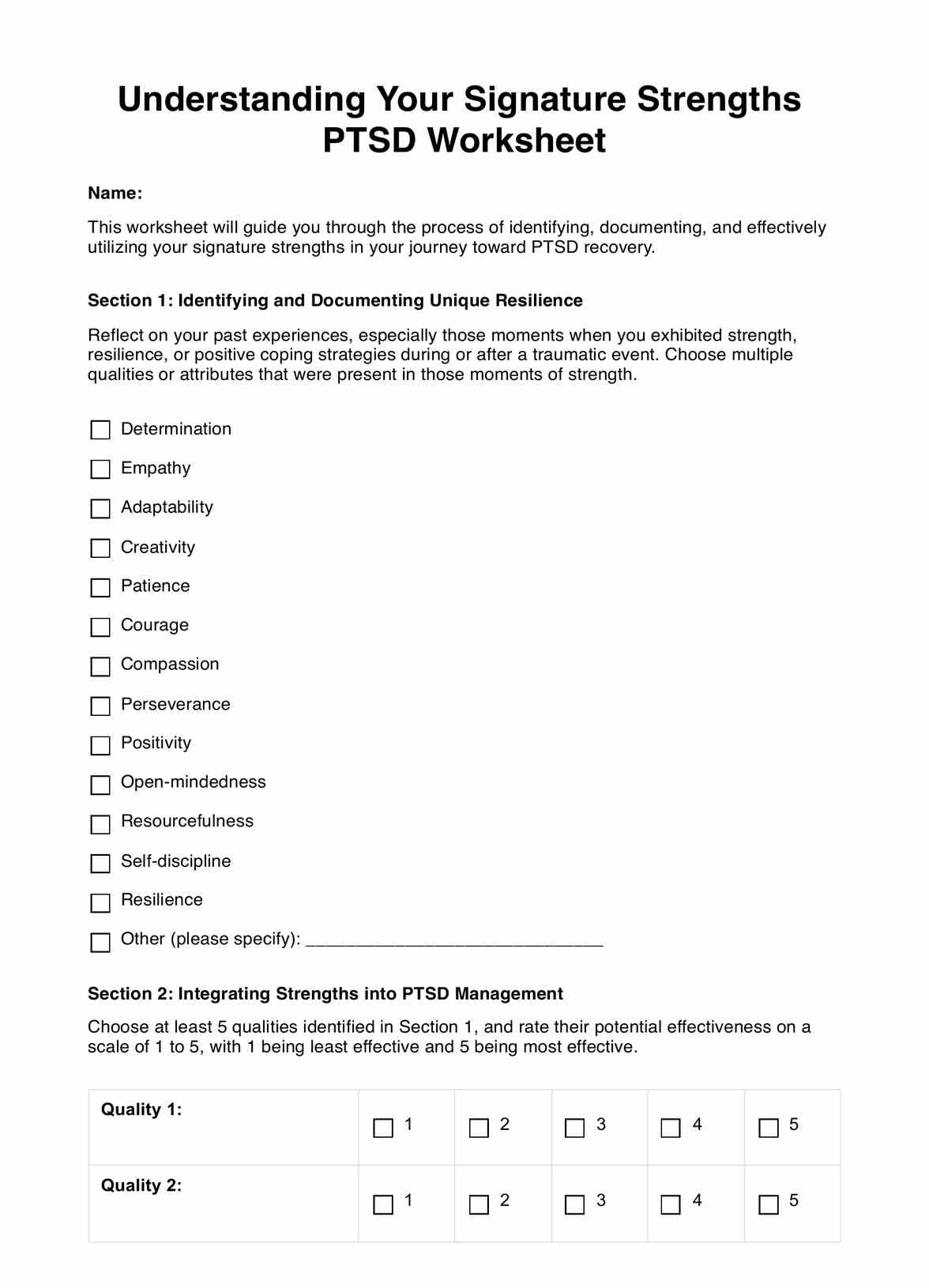It can vary depending on individual reflection and goal-setting. It may take one or more sessions to complete thoroughly.

Understanding Your Signature Strengths PTSD Worksheet
Get access to a free Understanding Your Signature Strengths PTSD Worksheet and help clients discover their skills. Download the free PDF here.
Use Template
Understanding Your Signature Strengths PTSD Worksheet Template
Commonly asked questions
This worksheet assists individuals in identifying their strengths and using them to cope with PTSD symptoms effectively.
It is best used when individuals are actively seeking ways to manage their PTSD symptoms and want to explore their personal strengths.
EHR and practice management software
Get started for free
*No credit card required
Free
$0/usd
Unlimited clients
Telehealth
1GB of storage
Client portal text
Automated billing and online payments











